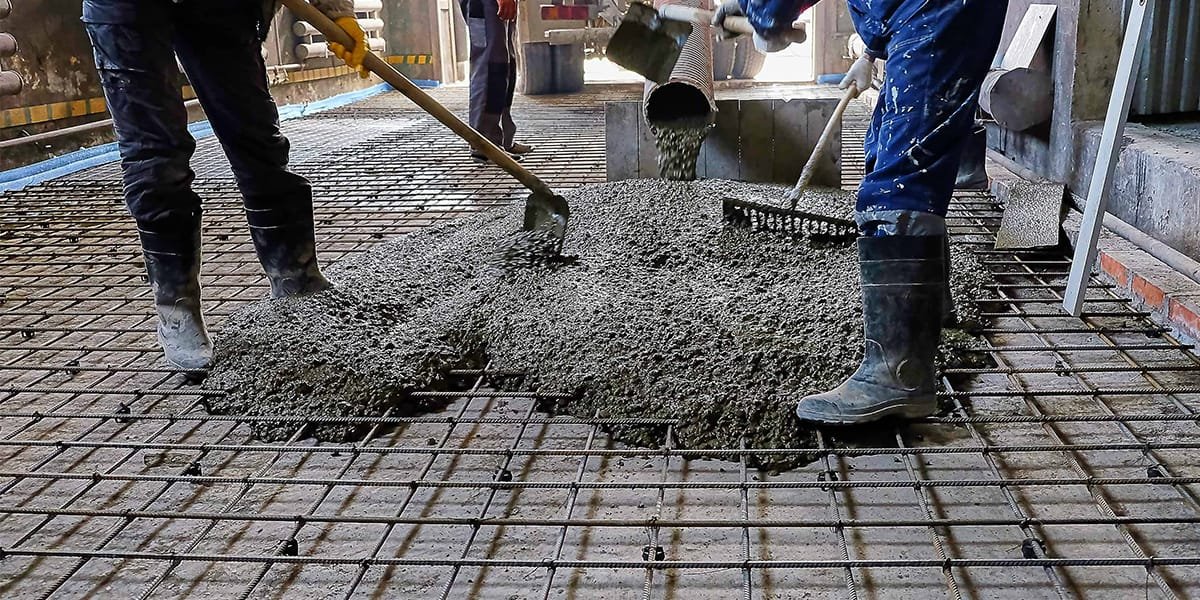
23 Mar What Is The Difference Between Concrete Footing And Concrete Foundation?
Concrete footings and foundations are distinct and important to any construction. But they are often used as if they are the same. Let’s break down the differences between concrete footings and foundations!
The concrete footing is below the frost line. It spreads the weight of the building across the soil. The foundation is the whole structure, including the footing. It includes walls, slabs, and other components.
Still confused between concrete footings and foundations? Continue reading this for a detailed explanation of concrete footings and foundations.
What Is Concrete Footing?
Concrete footing prevents the foundation from settling. It is the bottommost part of the foundation and distributes its weight across the soil. The weight distribution is important for a stable structure over a long time. Remember, footing is a part of the foundation.
Purpose
The purpose of the footing is to anchor the foundation. It increases the support for structure stability.
Weight Distribution:
Footing spreads the structure’s weight evenly across the soil. This stops it from sinking or settling due to uneven weight distribution.
Foundation Stability:
Footing anchors the foundation. It acts as a foot and the foundation acts as a leg. The foundation transfers the building’s weight to the ground. The footing evenly distributes that weight.
Soil Shifting:
Footing is key where the surface soil is soft and unstable.They place the footing deeper in the ground, where the soil is stable. It prevents the soil from shifting and unbalancing the structure.
Typical Uses
Builders use concrete footings for a variety of constructions. Let’s look at them in detail.
- Residential homes require footings to avoid settling.
- Footings used in decks are pergolas for stability.
- Commercial buildings require specially designed footing to avoid sinkholes.
- Footings are used in retaining walls to protect them from soil shifting.
Design Features
Concrete footings come in three designs. These designs are based on the purpose they serve. Let’s look at them one by one.
- Spread footing is a wide base that spreads the weight of the building onto the foundation. It is used in stable soils. The base is wider than the structure above it.
- Stepped footing is a pyramid-shaped base. It is used for unstable and uneven soil. It starts wider at the bottom and becomes narrower as it moves up the slope.
- Trench footing has reinforced concrete in it. Trench footing is wider than spread footing. It is used in structures such as walls.
What Is a Concrete Foundation?
The concrete foundation is a structural system that anchors a superstructure ( house). Concrete foundations transfer the weight of the superstructure to the earth.
Concrete foundations are placed on excavated ground to protect against thaw cycles. Foundations are supported by footing.
Purpose
The purpose of the foundation is to provide strength, stability, and weight distribution. The main purposes of concrete foundations:
- Resist gravity, moisture, and soil shifting.
- Anchors the structure.
- Equally, distribute the weight of the superstructure. Prevent sinking and uneven settling.
Typical Uses
Concrete foundations are used in:
- Concrete foundations are used in residential homes, such as single-family houses.
- A concrete foundation is used in commercial buildings, like offices and malls
- It is used in industrial structures, such as factories.
- Schools, bridges, and hospitals also have concrete foundations.
Types of Foundations:
There are three main types of foundations. These types are based on their structure, cost, and purpose. Let’s get into the details.
Slab-on-Grade
Slab-on-grade is the simplest and cheapest foundation. It is a concrete slab placed on excavated ground, often reinforced with steel. It is ideal for warm climates with no fear of freezing temperatures and frost. This foundation type has no basement or crawl spaces.
Basement Foundation
A basement foundation is a basement built with foundation material. Workers place a slab on deeply excavated ground. It also involves concrete walls around the slab. It acts as a foundation and basement both. Waterproofing is vital for the basement foundation. It keeps the basement safe and usable.
Crawl Space Foundation
The Crawl foundation has a crawl space between the superstructure and the slab. It reaches 18 inches to 4 feet in height. The space is not large enough for a person to stand. It is used as a storage space for utilities.
Key Differences Between Footing and Foundation
| Feature | Concrete Footing | Concrete Foundation |
| Purpose | Distribute equal weight onto the soil. Prevent soil shifting and sinking. Acts as a foot of the human body. | Distribute the load of the superstructure to the footing. Acts as a leg of the human body. |
| Location | They are placed below the frost line. Concrete footing is in direct contact with soil. | It is connected to the footing and placed above it. |
| Design | They are wider than concrete foundations. | They are narrower than concrete footings. |
| Applications | Elements of superstructure, such as Retaining walls, columns, and foundations | Residential homes, public places, walls, floors, etc. |
Why Both Are Important for Structural Stability
Concrete footings and foundations are vital. They ensure a building’s stability and durability. Footings protect superstructures from sinking. They also provide support to foundations. Concrete foundations support superstructures. They shift the load of the superstructure to the footings.
Concrete footing and foundations together prevent soil shifting and sinkholes. They also protect structures from unsettling pests, thaw frost, water moisture, and cracks.
How to Choose the Right Footing and Foundation for Your Project
Right footing and foundation depend on several factors. These include soil conditions and the load of the superstructure. Let’s learn how to select the best option for your project.
- Assess Soil Conditions:
The most important factor is the soil condition. It affects the choice of footing and foundation. Clay soils are best for deeper foundations to prevent soil shifting. Sandy soils are best suited for spread footing.
- Determine Load Requirements:
Understanding the load requirement of the superstructure helps decide the type of footing and foundation. The heavier the load, the stronger the footing and foundation. For residential homes, a slab foundation is ideal. For building and industrial structures, deep foundations and reinforced footing are ideas.
- Consider Climate:
Climate impacts the design of concrete footings and foundations. For example, if the construction ground has moisture, crawl foundations are ideal. In earthquake-prone areas, reinforced foundations with deeper footings are ideal.
- Work with professionals:
Take professional help. Professional engineers have extensive knowledge of concrete footings and foundations. They can also assess the soil, climate, and load of the superstructure. Their skills produce a design for your construction that is both cheap and perfect.
Conclusion
Concrete footings and foundations are vital for construction. The concrete footing is part of the concrete foundation. Choosing the right footings and foundations for your project is key to success.


